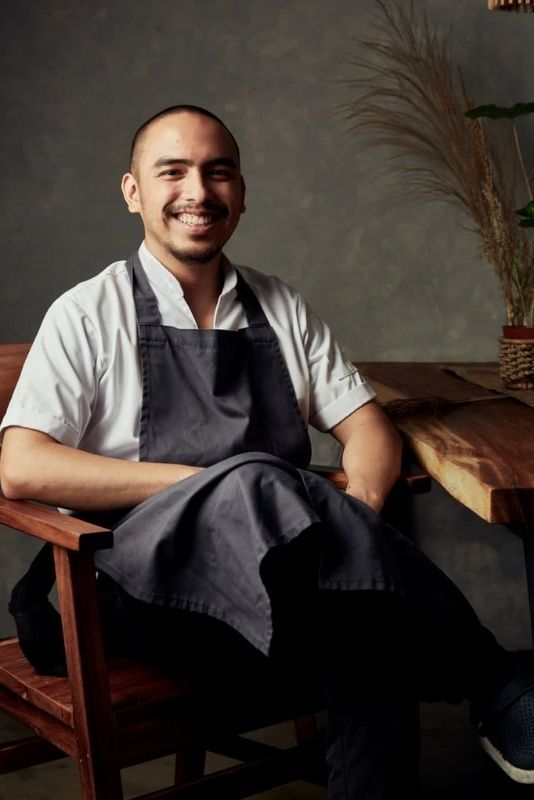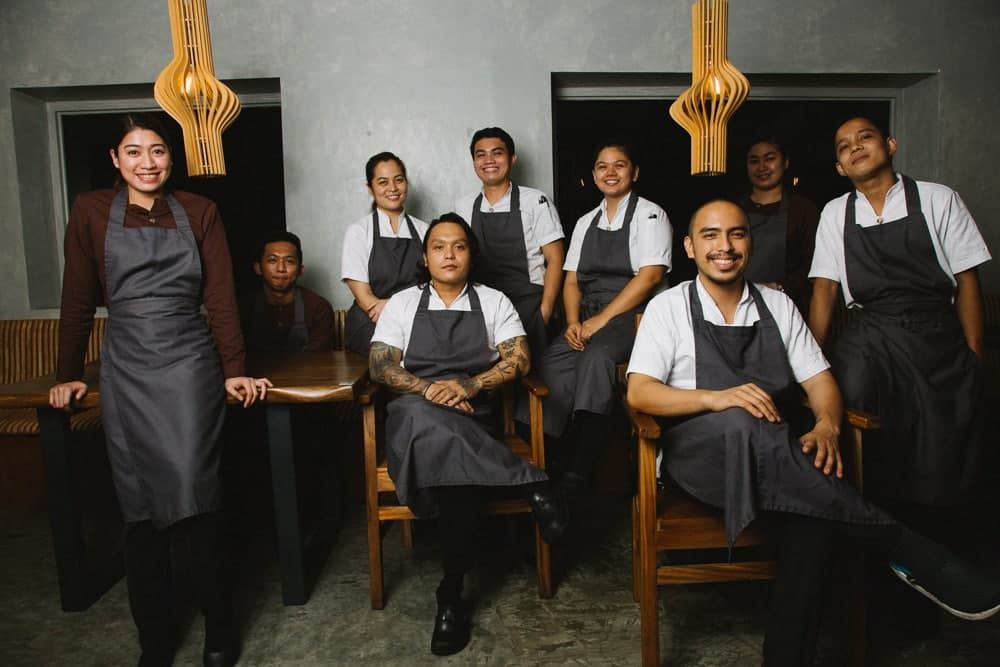Filipino cuisine is being fitted with new clothes by a circle of chefs robust with inspiration and ingenuity. But is there really a need for it when the current outfit wears just fine?
There’s a point being made when you turn Bicol’s traditional laing into squid ink-battered spheres topped with pickled mango. As one of Hapag Private Dining’s signature dishes, laing stones best represent the kind of cuisine the nondescript Quezon City restaurant wants to champion. By spiffing up the often messy plate of spiced coconut milk-braised taro leaves and converting it into an edible “stone garden” adorned with fresh herbs and finished with a tableside spritz of pickling liquid, a typical provincial home fare turns into an elegant appetiser that merits a crisp white linen and a social media post.
“We decided to open this kind of restaurant for one reason only—to showcase Filipino food and to know how far we can push the boundaries of the cuisine,” says chef slash co-owner Thirdy Dolatre. Together with Kevin Villarica and Kevin Navoa, he launched Hapag, a 42-seater tucked behind a congee shop along Katipunan Avenue, that intends to reimagine beloved items such as kare-kare, chicken inasal and bistek Tagalog into a feast for the senses.
They are a part of the still-growing club of chefs that are peppering their creativity into the unadulterated world of Filipino food. “We think it’s very important to do this because we’d like to think that Filipino cuisine can match any type of cuisine. We feel that the techniques passed down to us by our chefs when we were an apprentice can only improve what we know now,” says Villarica. “We are sure that we are only scratching the surface of the potential of our own cuisine,” adds Navoa.
Read more: Foodie Finds: Author Angelo Comsti Shares His Top 5 Takeout Picks

A recent member of the league is Don Baldosano, who has been serving an inspired menu at the backyard of his family’s Parañaque home. His dishes come in smaller, solo-sized portions and are all part of a progressive meal, which is a far cry from the manner to which we grew up enjoying Filipino food.
“I am a firm believer that a cuisine should never be stagnant,” says the 22-year-old. “It must always move forward—from discovering local ingredients and techniques to re-introducing forgotten generations-old recipes that we can share with people.”
LOOKING BACK
Though these chefs share a common goal, their approaches may differ. Baldosano’s routine is to talk to different farmers and wet market vendors to fish out their knowledge about their own produce including how they like to prepare them. He also forages in the forest and tries to incorporate his discoveries in his dishes.
One of the things he found on the field isn’t actually savoury, but its aroma triggered clever ideas. “The idea behind my dessert Kugon Sorbetes is to serve the components that co-exist in a single terroir into one dish,” he says. The kugon is a type of grass traditionally used as a roofing material by our ancestors. He roasts and steeps it in his ice cream base to produce sorbetes that exhibits a matcha-like flavour. Scoops of it are served with mulberries harvested from the same area as the kugon and rice that is seasoned with muscovado.
For the chefs at Hapag, the process starts by looking back at their family recipes and turning to lesser-known local ingredients and techniques. Fortunately, they usually end up with something that makes sense to all three of them.
One successful dish born out of this process is their Ginanggang Ice Cream, which is largely inspired by a popular street snack in Mindanao composed of a saba banana that is skewered and grilled over charcoal, brushed with margarine and sprinkled with white sugar.
Their version marries two kinds of bananas— grilled saba and blackened ones, which is the result of slow cooking them in a rice cooker for two weeks. Doing so brings out its caramelised toffee notes. The mixture is then churned with cream and served with a streusel made of pinipig crunch, cashews, coffee oil and meringue.
Related: The Food Evangelists: Meet The People Promoting Filipino Cuisine Across The Globe


